
Esta Geocache foi criada por nós de modo a promover o Geocaching em Alcobaça
Esta cache é uma 2º versão duma cache que outrora existiu por aqui.

Caros geocachers,
Alcobaça esconde muitos recantos que encantam quem por lá passa, desde a sua herança cultural, arquitectónica e natural, às relíquias da Ordem de Cister, às praias, às lagoas, às grutas, lagares, pinhais aos Parques naturais.
Esta Letterbox é sobre os Palacetes e Chalets de Alcobaça, onde todos eles apresentam o estilo arquitectónico do Romantismo tardio do século XIX / XX.

Dear geocachers,
Alcobaça hides many beautiful places that enchant those who are passing by, from its cultural, architectural and natural patrimony, to the relics of the Cistercian Order and finally to the beaches, lakes, caves, wineries and natural pines forests.
This Letterbox will take you to know the Palaces and Chalets of Alcobaça, where they all have the architectural style of late Romanticism of the nineteenth and twentieth centuries.
|
|
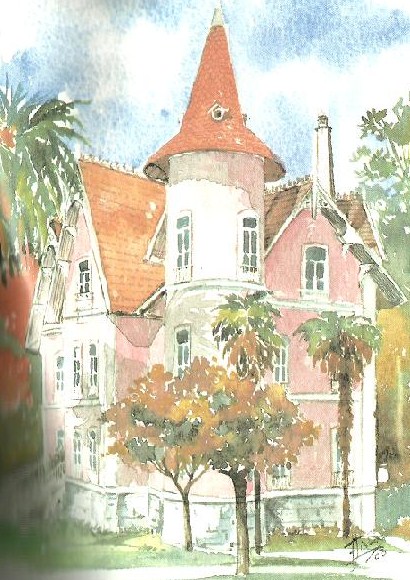
|
CHALET FRANCISCO D’ORIOL PENA

Construído em 1890, por Francisco Xavier d’Oriol Pena, na Quinta da Gafa, antigo relego do Mosteiro. Este, que foi projectado por um arquitecto suíço, mostra a ostentação, a grandeza e a verticalidade dos telhados, usados nos países onde a neve é bastante abundante. A 22 de Abril de 1932, o Engenheiro Miguel Jacobetty é incumbido, pela Câmara Municipal de Alcobaça, de efectuar uma planta geral da Quinta da Gafa. Em Junho de 1932 são efectuadas as escrituras que oficializam a compra da Quinta Gafa aos Herdeiros de Francisco Oriol Pena.
Em que dia foi inaugurado o Jardim dos Paços do Concelho?
Resposta = A

Built in 1980, by Francisco D’Oriol Pena, in the Gafa Villa (an old mill that belonged to the Monestry). This Chalet, which was designed by a Swiss architect, shows the ostentation, the greatness and the verticality of the roofs, used in countries where the snow is quite abundant. On April 22 of 1932, the Engineer Miguel Jacobetty is encharged, by the Municipality of Alcobaça, to make a general plan of the Gafa Villa. In June 1932, the purchase of the Gafa Villa is finally formalized to the Heirs of Francisco D’Oriol Pena.
In which day was inaugurated the Garden of the Town Hall?
Result = A
|
|
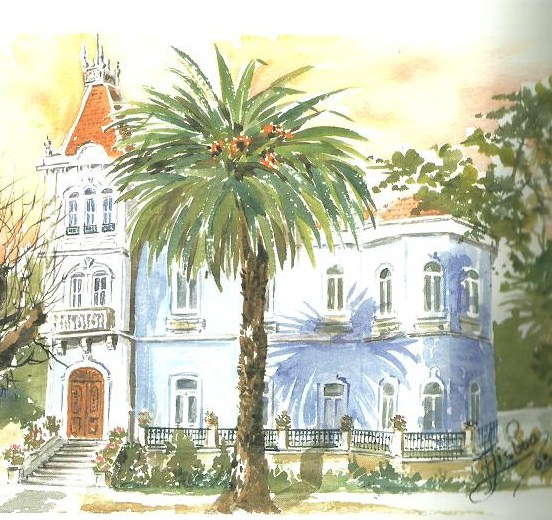 |
PALACETE RINO

Construído por volta 1891/1892, para residência de José Pereira da Silva Rino casado com D.ª Capitolina Araújo Guimarães, filha do fundador da Fábrica de Fiação e Tecidos. Na década de 1970, Maria Cristina Rino doou o palacete à Congregação Religiosa de S. José de Cluny, que vendeu o seu recheio, um dos mais ricos de Alcobaça. Neste sentido, hoje está instalado um infantário neste encantador espaço, sob a orientação das Irmãs da congregação mencionada. No exterior, os telhados fortemente inclinados são característicos dos países do centro da Europa e de onde na época vinham as inspirações arquitectónicas para Portugal.
Qual o santo que está á frente do palácio?
S.António = 4
S.José = 5
S.Bernardo = 6
Resposta = B

Built around 1891/1892 for the residence of José Pereira da Silva Rino married D.ª Capitolina Araújo Guimarães, daughter of the founder of the factory wiring and fabrics. In the 1970 Maria Cristina Rino donated the palace to the congregation of St. Joseph of Cluny, who sold his filling, one of the richest Alcobaça. In this sense, today installed a nursery in this charming space, under the guidance of the Sisters of the congregation mentioned. Overseas, strongly inclined roofs are characteristic of the center of Europe and where the time came to Portugal architectural inspirations.
What the saint who is in front of the palace?
S.António = 4
S.José = 5
S.Bernardo = 6
Result = B
|
|
|
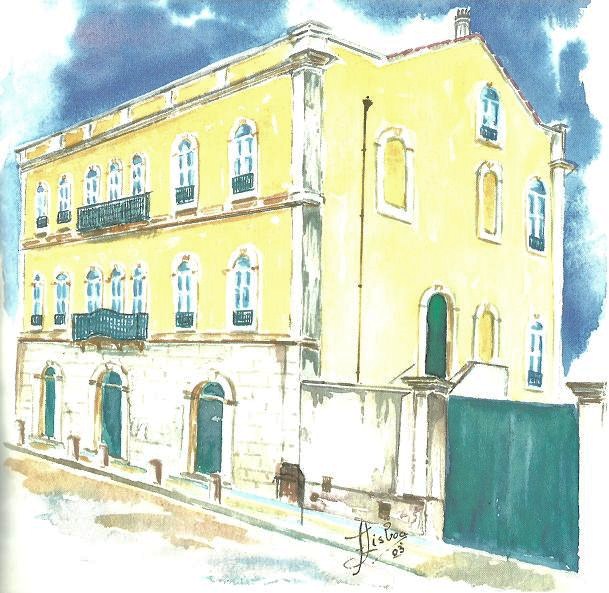 |
PALACETE BERNARDINO LOPES DE OLIVEIRA

Bernardino Lopes de Oliveira consagrou grande parte da sua fortuna ao desenvolvimento da vila de Alcobaça, hoje cidade. Esta casa, situada na Rua da Conceição, foi objecto de restauro pelo actual proprietário, tendo sido alterado algumas partes do seu interior, nomeadamente um elevador para o uso dos utentes de uma actual clínica a funcionar naquele espaço. No exterior, mantém a traça original respeitando os elementos arquitectónicos da época.
Qual o último dígito do ano em que o palacete foi construído?
Resposta = C

Bernardino de Oliveira Lopes devoted much of his fortune to the development of the town of Loulé, the city today. This home, located at Rua da Conceicao, has been restored by its current owner, has been changed some parts of its interior, including an elevator for use by current users of a clinical working in that space. Abroad, maintains its original architectural elements respecting the time.
What is the last digit of the year in which the palace was built?
Result = C
|
|
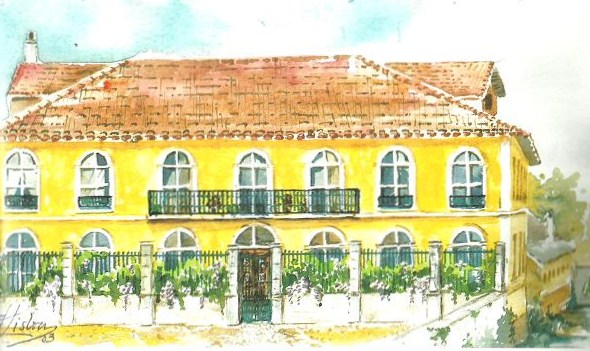 |
PALACETE ARAÚJO GUIMARÃES

Construído por volta de 1870/1872, pertence a um industrial, Araújo Guimarães, que foi um grande impulsionador do desenvolvimento industrial de Alcobaça. O palacete com o seu nome, também evidencia o estilo arquitectónico das casas abastadas do século XIX. Hoje, neste palacete funciona a biblioteca municipal de Alcobaça.
Foi alvo de obras de restauro e conservação, nomeadamente no seu interior, onde foi adaptado o espaço para guardar a acumulação documental da nossa cidade.
Quantas Janelas estão dentro da Varanda?
Resposta = D

Built around 1870/1872, belongs to an industrial Araújo Guimarães, who was a major driver of industrial development Alcobaça. The palace with its name, also highlights the architectural style of the wealthy homes of the nineteenth century. Today, this palace runs the municipal library Alcobaça.
Was the target of restoration and conservation, particularly inside, where the space was adapted for storing document the accumulation of our city.
How many windows are in the balcony?
Result = D
|
|
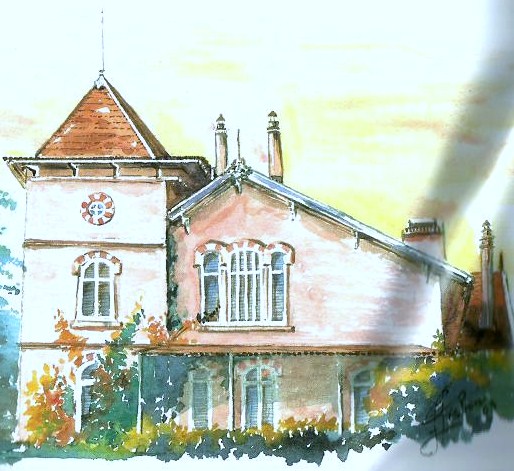 |
CHALET DA FIAÇÃO E TECIDOS

Construído em 1912, para residência do director da Companhia de Fiação e Tecidos de Alcobaça e onde mais tarde funcionou o Externato Alcobacense, conhecido pelo nome de Colégio do Dr. Cabrita, seu director. Trata-se de um edifício de planta quadrangular, marcado por torreão e por estrutura com cobertura em escamas. A decoração dos azulejos e a traça das cantarias ligam este edifício à Arte Nova. Aqui se alojou o primeiro Presidente da República Portuguesa, o Dr. Teófilo Braga, quando em 26 de Setembro de 1915 se deslocou a Alcobaça para inaugurar a Exposição Pomológica. Devido à falência da Companhia de Fiação e Tecidos de Alcobaça, a associação CEERIA adquiriu o Edifício.
Qual o animal representado no azulejo do canto inferior direito?
Pássaro = 1
Tartaruga = 2
Peixe = 3
Resposta = E

Built in 1912, it was the residence of the Director of the Spinning and Textiles Company of Alcobaça. Later then, it worked as a school known as Dr. Cabrita College. It is a quadrangular building marked by a tower and a structure covered with scales. The decoration of the tiles and the stonework connect this building to the Art Nouveau. Here it was housed the first President of Portugal, Dr. Teófilo Braga, on September 26, 1915, during his passage through Alcobaça. Due to the bankruptcy of the Spinning and Textiles Company, in Alcobaça, the Association of CEERIA purchased the building.
Which the animal represented in tile bottom right?
Bird = 1
Turtle = 2
Fish = 3
Result = E
|
|
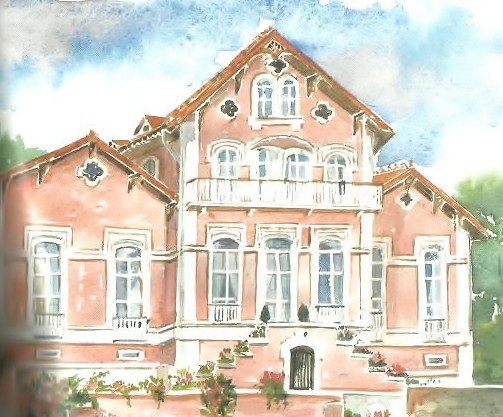 |
CHALET DA FONTE NOVA

Construído em 1877, pertence a um industrial, António Cândido da Encarnação, situado na zona da Quinta da Fonte Nova, tendo sido requalificado para a nova actividade que aí tem lugar, o Turismo de Habitação.
O interior está decorado com objectos de grande valor. Contudo só uma mesa é que remonta à época de construção do palacete.
Qual o número do Portão Principal?
Resposta = F

Built in 1877, belongs to an industrial, Antonio Candido of the Incarnation, located in the Quinta da Fonte Nova, has been reclassified to the new activity that takes place there, the Manor house.
The interior is decorated with objects of great value. However, only one table is that it dates from the construction of the mansion.
What is the number of the Main Gate?
Result = F
|
|
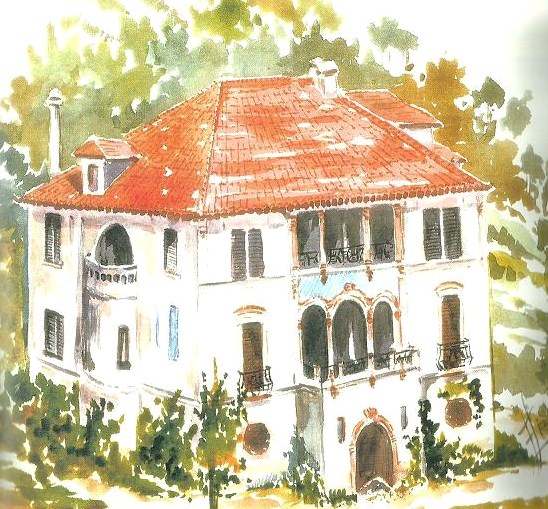 |
PALACETE DO DR. ANTÓNIO DE SOUSA NEVES

Construído em 1908, pouco se sabe acerca deste edifício. Encontra-se implantado no meio de uma antiga quinta, acompanhando o desnível do terreno, na margem esquerda do rio Baça. A propriedade é privada e encontra-se rodeada por um muro onde se rasga um amplo portão em ferro, com as iniciais do proprietário (ASN).
Do pouco que se observa, é visível uma varanda semelhante ao género arquitectónico do Romantismo tardio e ainda se observam também painéis de azulejos azuis que percorrem o Palacete.
Qual o último dígito do ano que se encontra sobre a porta?
Resposta = G

Built in 1908, little is known about this building. It is implanted in the middle of an old farm, following the contour of the ground on the left bank of the river weeping. The property is private and is surrounded by a wall where he rips a large iron gate with the initials of the owner (ASN).
From what little noted, is visible a balcony similar to the gender architecture of the late-Romanticism and yet are also seen blue tile panels that run through the palace.
What is the last digit of the year that is on the door?
Result = G
|

Por fim o Palacete Dr. António De Sousa Neves, será o fecho desta caminhada. Esperamos que saboreie e desfrute desta Letterbox, acreditamos que com esta cache está a visitar todos os pontos importantes de Alcobaça, a herança cultural que referíamos. O trajecto tem aproximadamente 5 km e está planeada para durar 01H30. Como é óbvio a duração da Letterbox vai depender do passo de cada Geocacher e do caminho que optar. Aconselhamos a seguir a ordem dos Palacetes e Chalets apresentados nesta página.

Finally, the Palace Rino, will be the closing of this hike. We hope you enjoy and enjoy this letterbox, we believe that with this cache is to visit all the important points of Alcobaça, the cultural heritage were referring. The route is about 5 km and is planned to last 01h30. Obviously the length of the letterbox will depend on the step and the path each Geocacher to choose. We advise you to follow the order of Palaces and Chalets on this page.
Coordenadas Finais/Final Coordinates:
N 39º C (D-1).(G+1)(E-1)B
W oo8º B (F+1).(E+1)A+(C-1)
Verifique sua solução
A CACHE

Na cahe final encontrará um logbook, um carimbo, uma almofada de tinta(por favor não retirar qualquer um destes objectos) e muitos objectos para troca.

When you find the cache you will find a logbook, a stamp, an ink pad (please do not remove any of these objects) and many objects to trade.
